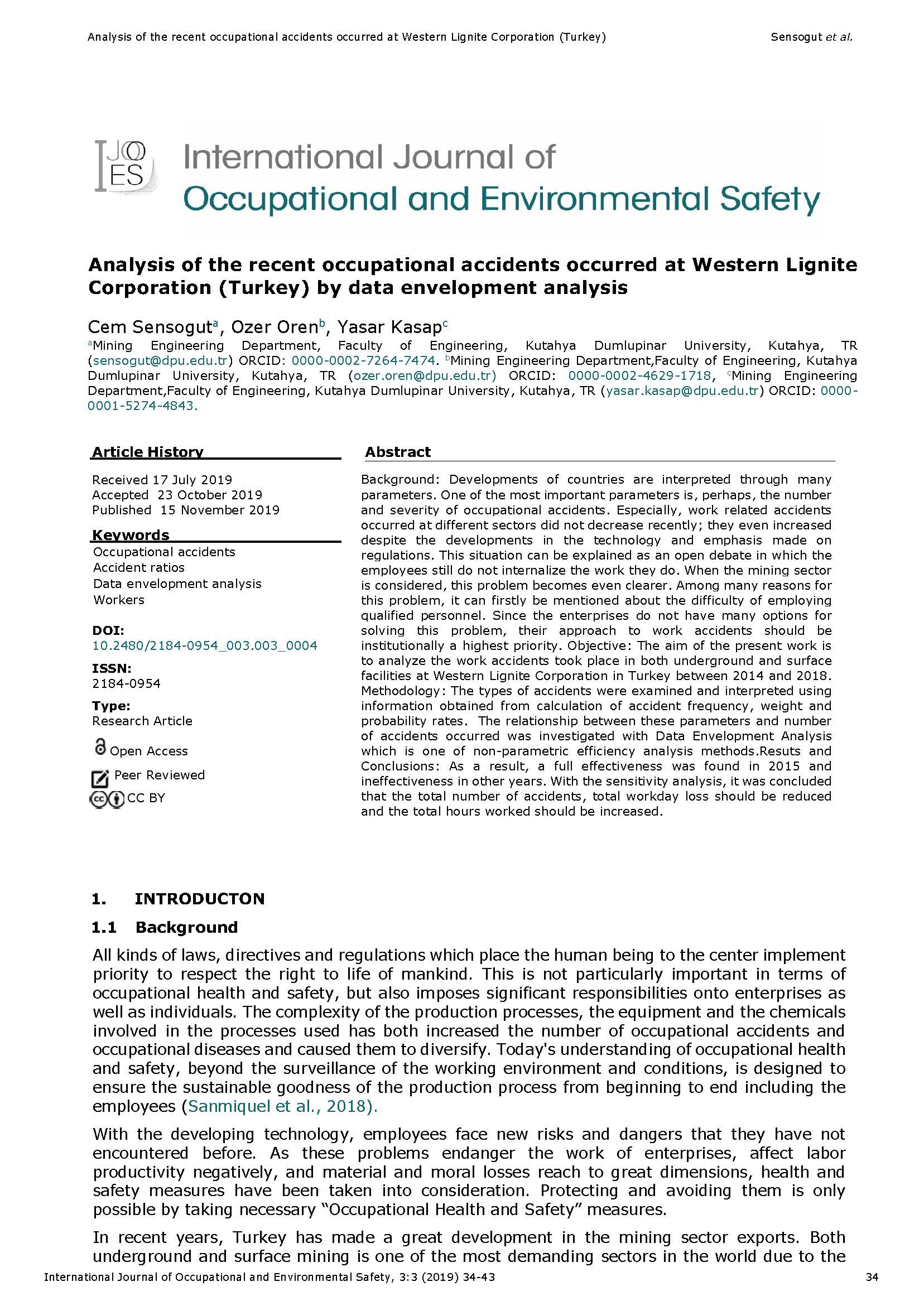Analysis of the recent occupational accidents occurred at Western Lignite Corporation (Turkey) by data envelopment analysis
Main Article Content
Abstract
Developments of countries are interpreted through many parameters. One of the most important parameters according to the order of importance is perhaps the occupational accidents. Especially in recent years, work related (or occupational) accidents occurred at different sectors did not decrease; they even increased despite the developments in the technology and emphasis made on the regulations. This situation can be interpreted as an open debate in which the employees still do not internalize the work they do. Often, enterprises do not choose the right personnel for the job or the personnel chosen are not oriented to the work with the through proper methods. When the mining sector is taken into account, this problem becomes even clearer. Among the many reasons for this problem, it can firstly be mentioned about the difficulty of employing qualified and well-educated personnel. Since the enterprises do not have many options in the solution of this problem, their approach to work accidents should be institutionally a highest priority. During this process they must also use proactive approaches. For example, all accidents and occupational diseases should be recorded, possible causes of them should be put forth, and statistical analysis should be conducted to guide the future of the institution.
In this study, the work accidents took place in both underground and surface facilities at Western Lignite Corporation (WLC) which is one of the most important lignite producers in Turkey between the years 2014 and 2018 were analyzed by Data Envelopment Analysis (DEA). The types of accidents were also examined and interpreted using the information obtained from the calculation of accident frequency, accident weight and accident probability rates. With the sensitivity analysis realized, it was tried to draw attention to the occupational safety measures to be made in the future.

